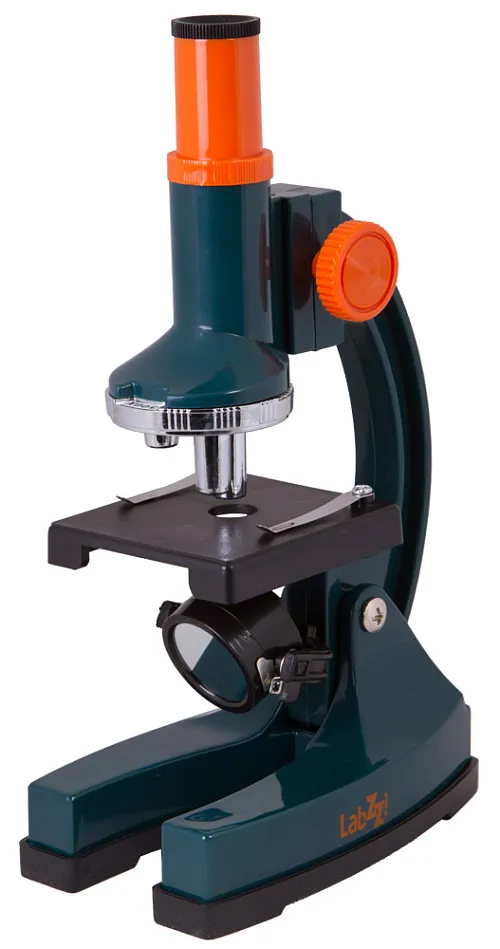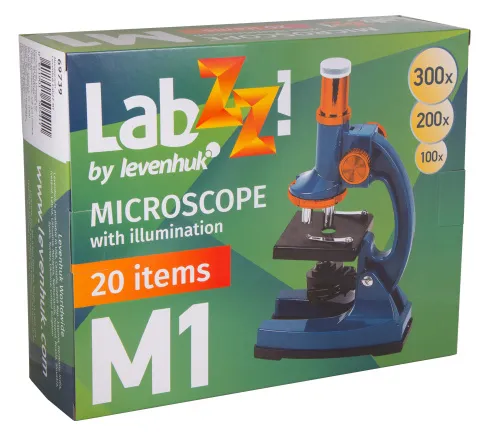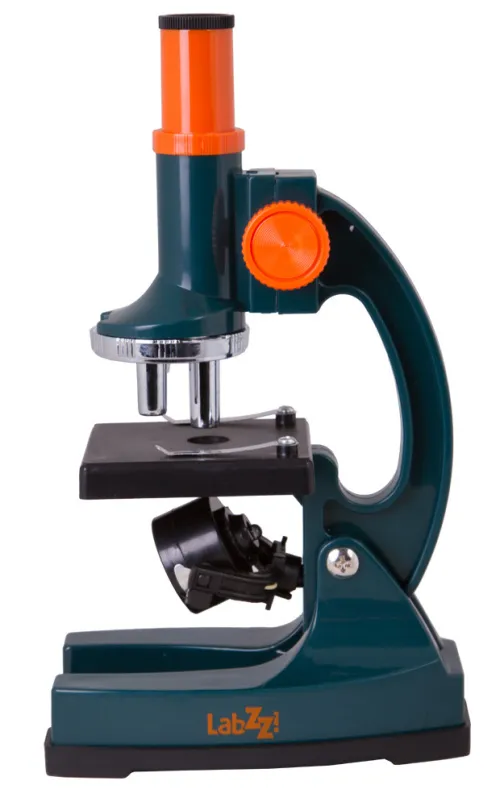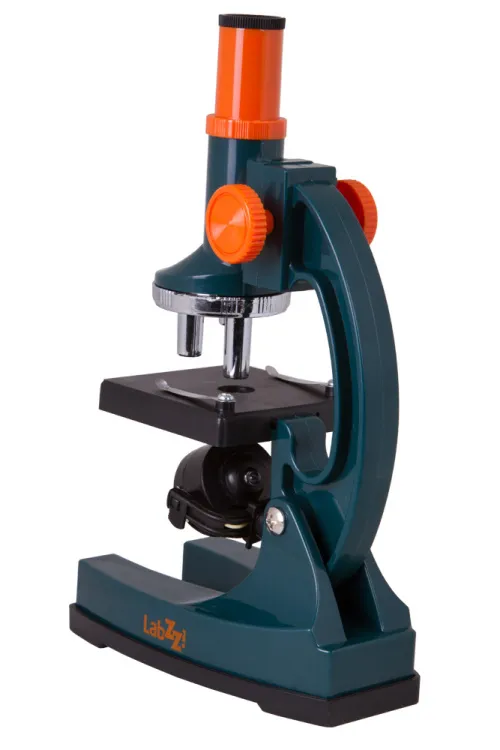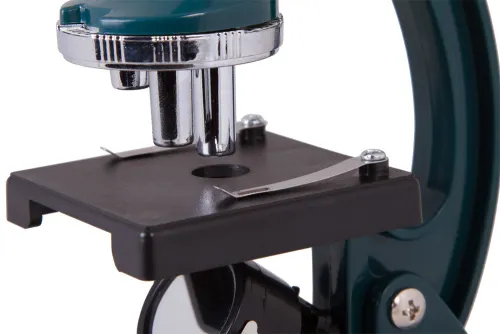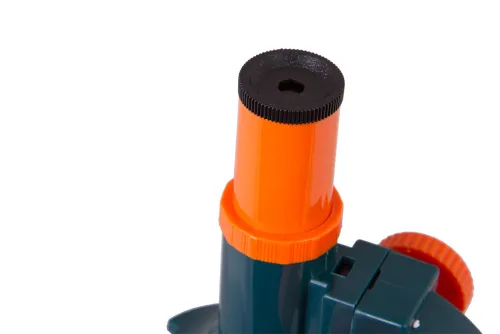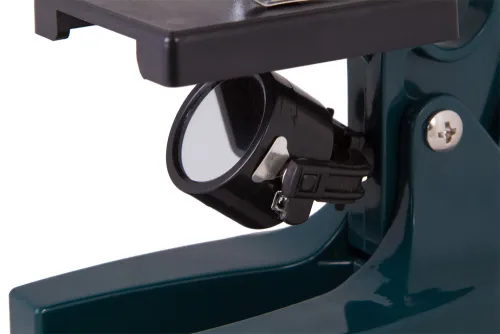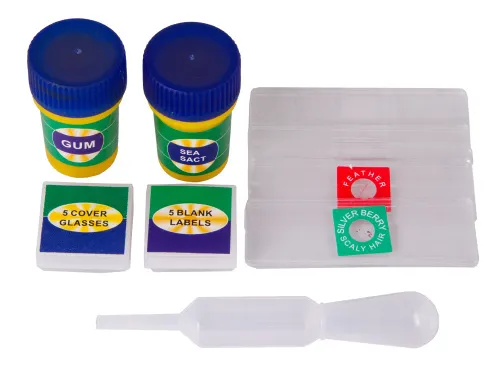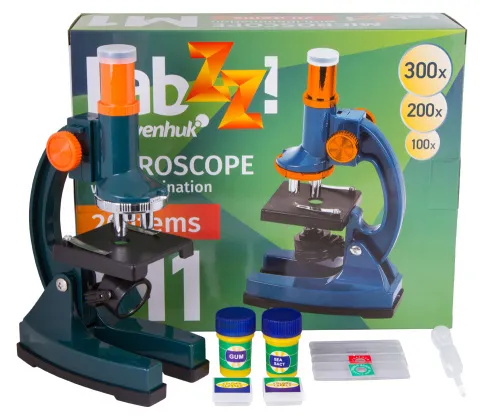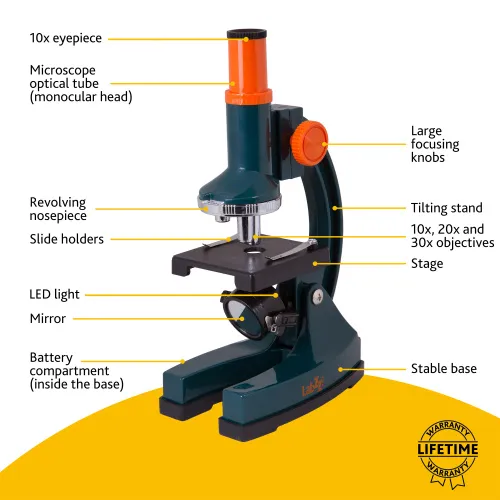Levenhuk LabZZ M1 Microscope
Magnification: 100–300x. Experiment kit included
| Product ID | 69739 |
| Brand | Levenhuk, Inc., USA |
| Warranty | lifetime |
| EAN | 5905555011479 |
| Package size (LxWxH) | 8x21x26 cm |
| Shipping Weight | 0.4 kg |
Levenhuk LabZZ M1 Microscope is designed for young explorers of the microcosm. With this microscope young scientists will take their first steps in science. The supplied kit includes everything needed for this purpose: easy-to-use microscope, prepared microscope slides, and special tools for working with microscope samples. Kids can manage the instrument independently and explore amazing structures of everyday things.
Levenhuk LabZZ M1 Microscope is equipped with a lower illuminator that allows observations of transparent microscope samples. The range of available samples includes any ready-to use microscope slides, life in a water drop, and many other things. The illuminator is rotatable – one side has a mirror (used in sufficient daytime lighting), and the other side has an LED. The LED is powered by 2 AA batteries (not included).
Besides observing ready-to-use slides included in the package, kids can also create their own slides. A sample is just placed in the center of a blank slide, fixed, and then covered with a cover glass. The most interesting specimens can be kept for future observations.
Levenhuk LabZZ M1 Microscope produces three fixed magnifications: 100x, 200x and 300x. You can choose your desired magnification step by rotating the microscope’s revolving nosepiece. Sharpness is adjusted with a separate knob. The stage is equipped with special metal clips that hold the studied specimen in place during observations.
Features:
- Simple model designed especially for children
- Lenses made of high-quality optical polymer glass
- Magnification up to 300x
- Battery-powered illumination
- Lightweight plastic body
- Experiment kit included
The kit includes:
- Microscope
- Eyepiece
- Pipette
- Prepared slides (2 pcs)
- Blank slides (2 pcs)
- Cover slips (5 pcs)
- Slide stickers (5 pcs)
- Glue
- Sea salt
Levenhuk LabZZ M1 Microscope is not compatible with Levenhuk digital cameras due to non-standard 17-mm eyepiece tube diameter.
| Product ID | 69739 |
| Brand | Levenhuk, Inc., USA |
| Warranty | lifetime |
| EAN | 5905555011479 |
| Package size (LxWxH) | 8x21x26 cm |
| Shipping Weight | 0.4 kg |
| Type | biological, light/optical |
| Microscope head type | monocular |
| Optics material | optical polymer glass |
| Head | fixed (non-rotatable) |
| Head inclination angle | not angled |
| Magnification, x | 100 — 300 |
| Eyepiece tube diameter, mm | 17 |
| Eyepieces | 10x |
| Objectives | 10x, 20x, 30x |
| Revolving nosepiece | for 3 objectives |
| Stage, mm | 60x65 |
| Stage moving range, mm | fixed |
| Stage features | with clips |
| Focus | coarse |
| Body | plastic |
| Illumination | mirror, LED |
| Power supply | 2 AA batteries (not included) |
| Power supply: batteries/built-in battery | yes |
| User level | elementary |
| Assembly and installation difficulty level | extremely simple |
| Application | elementary |
| Illumination location | lower |
| Research method | bright field |
| Experiment kit included | ✓ |
We have gathered answers to the most frequently asked questions to help you sort things out
Find out why studying eyes under a microscope is entertaining; how insects’ and arachnids’ eyes differ and what the best way is to observe such an interesting specimen
Read this review to learn how to observe human hair, what different hair looks like under a microscope and what magnification is required for observations
Learn what a numerical aperture is and how to choose a suitable objective lens for your microscope here
Learn what a spider looks like under microscope, when the best time is to take photos of it, how to study it properly at magnification and more interesting facts about observing insects and arachnids
This review for beginner explorers of the micro world introduces you to the optical, illuminating and mechanical parts of a microscope and their functions
Short article about Paramecium caudatum - a microorganism that is interesting to observe through any microscope

